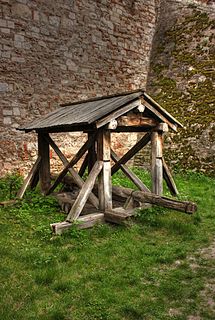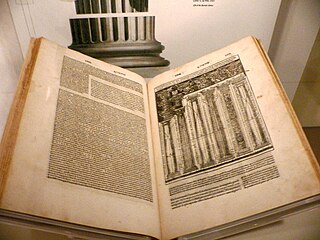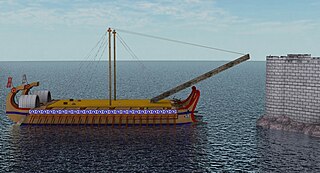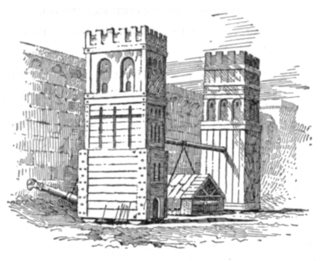 W
WThe ballista, plural ballistae, sometimes called bolt thrower, was an ancient missile weapon that launched either bolts or stones at a distant target.
 W
WA battering ram is a siege engine that originated in ancient times and was designed to break open the masonry walls of fortifications or splinter their wooden gates. In its simplest form, a battering ram is just a large, heavy log carried by several people and propelled with force against an obstacle; the ram would be sufficient to damage the target if the log were massive enough and/or it were moved quickly enough. Later rams encased the log in an arrow-proof, fire-resistant canopy mounted on wheels. Inside the canopy, the log was swung from suspensory chains or ropes.
 W
WThe cheiroballistra or manuballista (Latin), which translates in all its forms to "hand ballista", was an imperial-era Roman siege engine. Designed by Hero of Alexandria and mostly composed of metal, it shot bolts that were smaller than those in other forms of ballistae and generally made of metal. It was the next major improvement after the scorpio.
 W
WDe architectura is a treatise on architecture written by the Roman architect and military engineer Marcus Vitruvius Pollio and dedicated to his patron, the emperor Caesar Augustus, as a guide for building projects. As the only treatise on architecture to survive from antiquity, it has been regarded since the Renaissance as the first book on architectural theory, as well as a major source on the canon of classical architecture. It contains a variety of information on Greek and Roman buildings, as well as prescriptions for the planning and design of military camps, cities, and structures both large and small. Since Vitruvius published before the development of cross vaulting, domes, concrete, and other innovations associated with Imperial Roman architecture, his ten books give no information on these hallmarks of Roman building design and technology.
 W
WThe mangonel, also called the traction trebuchet, was a type of trebuchet or siege engine used in Ancient China starting from the Warring States period, and later across Eurasia by the 6th century AD. Unlike the earlier torsion engines and later counterweight trebuchet, the mangonel operated on manpower pulling cords attached to a lever and sling to launch projectiles. Although the mangonel required more men to function, it was also less complex and faster to reload than the torsion-powered ballista and onager which it replaced in early Medieval Europe. It was replaced as the primary siege weapon in the 12th and 13th centuries by the counterweight trebuchet. A common misconception about the mangonel is that it was a torsion siege engine, which it is often depicted as in modern times, despite all evidence to the contrary.
 W
WThe onager was a Roman torsion powered siege engine. It is commonly depicted as a catapult with a bowl, bucket, or sling at the end of its throwing arm. The onager was first mentioned in AD 353 by Ammianus Marcellinus, who described onagers as the same as a scorpion. The onager is often confused with the later mangonel, a "traction trebuchet" that replaced torsion powered siege engines in the 6th century AD.
 W
WThe sambuca was a ship-borne siege engine which was invented by Heracleides of Tarentum and was first used unsuccessfully by Marcus Claudius Marcellus during the Roman siege of Syracuse in 213 BC.
 W
WA siege tower or breaching tower is a specialized siege engine, constructed to protect assailants and ladders while approaching the defensive walls of a fortification. The tower was often rectangular with four wheels with its height roughly equal to that of the wall or sometimes higher to allow archers to stand on top of the tower and shoot arrows into the fortification. Because the towers were wooden and thus flammable, they had to have some non-flammable covering of iron or fresh animal skins.